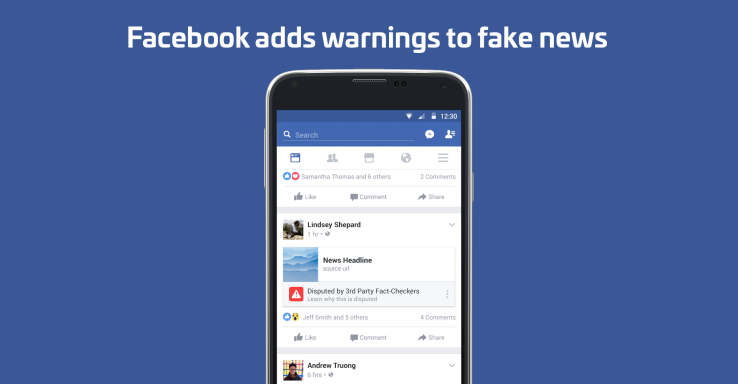The Way Fake news spreads so fast on Facebook

How can we fight back against the fake news infecting our information feeds and political systems? New research suggests that education and filtering technology might not be enough: The very nature of social media networks could be making us peculiarly vulnerable.
The intentional spreading of false stories has been credited with swaying such monumental events as last year's Brexit vote and U.S. presidential election. Tech firms such as Alphabet Inc. unit Google and Facebook Inc. have been trying to find ways to weed it out, or at least help users spot it. Some say we need to start earlier, educating children on how to think critically.
But understanding the unique epidemiology of fake news may be no less important. Unlike a typical virus, purveyors of falsehood don't have to infect people at random. Thanks to the wealth of information available on social media and the advent of targeted advertising, they can go straight for the most susceptible and valuable victims -- those most likely to spread the infection.
This insight emerges from a recent study by network theorists Christoph Aymanns, Jakob Foerster and Co-Pierre Georg, who ran computer simulations of the way fake news moves through social networks. Using state-of-the-art machine learning algorithms, they examined how individuals might learn to recognize false news, and sought to identify the most important factors in helping fake news spread.
They found that the most important catalyst of fake news was the precision with which the purveyor targeted an audience -- a task that can easily be accomplished using the data that tech companies routinely gather and sell to advertisers. The key was to seed an initial cluster of believers, who would share or comment on the item, recommending it to others through Twitter or Facebook. False stories spread farther when they were initially aimed at poorly informed people who had a hard time telling if a claim was true or false.
Hence, we've unwittingly engineered a social media environment that is inherently prone to fake news epidemics. When marketers use information on surfing habits, opinions and social connections to aim ads at people with just the right interests, this can facilitate beneficial economic exchange. But in the wrong hands, the technology becomes a means for the precision seeding of propaganda.
It's hard to see how this can change without altering the advertising-centric business model of social media. Aymanns suggests that big social media companies could counteract fake news by preventing advertisers from targeting users on the basis of political views, or even by suspending all targeted ads during election campaigns. But this might be impossible, given how important such advertising has become to the economy. Alternatively, opponents of fake news could use the same targeting technology to identify and educate the most vulnerable people -- say, providing them with links to information that might help them avoid being fooled.
The study does offer one positive conclusion: Broad awareness of fake news should tend to work against its success. Campaigns were much less successful when individuals in the model learned strategies to recognize falsehoods while being fully aware that purveyors were active. This suggests that public information campaigns can work, as Facebook's seemed to do ahead of the French election in May.
In other words, fake news is like a weaponized infectious agent. Immunization through education can help, but it might not be a comprehensive defense.
Hi! I am a robot. I just upvoted you! I found similar content that readers might be interested in:
https://www.bloomberg.com/view/articles/2017-08-31/why-fake-news-spreads-so-fast-on-facebook